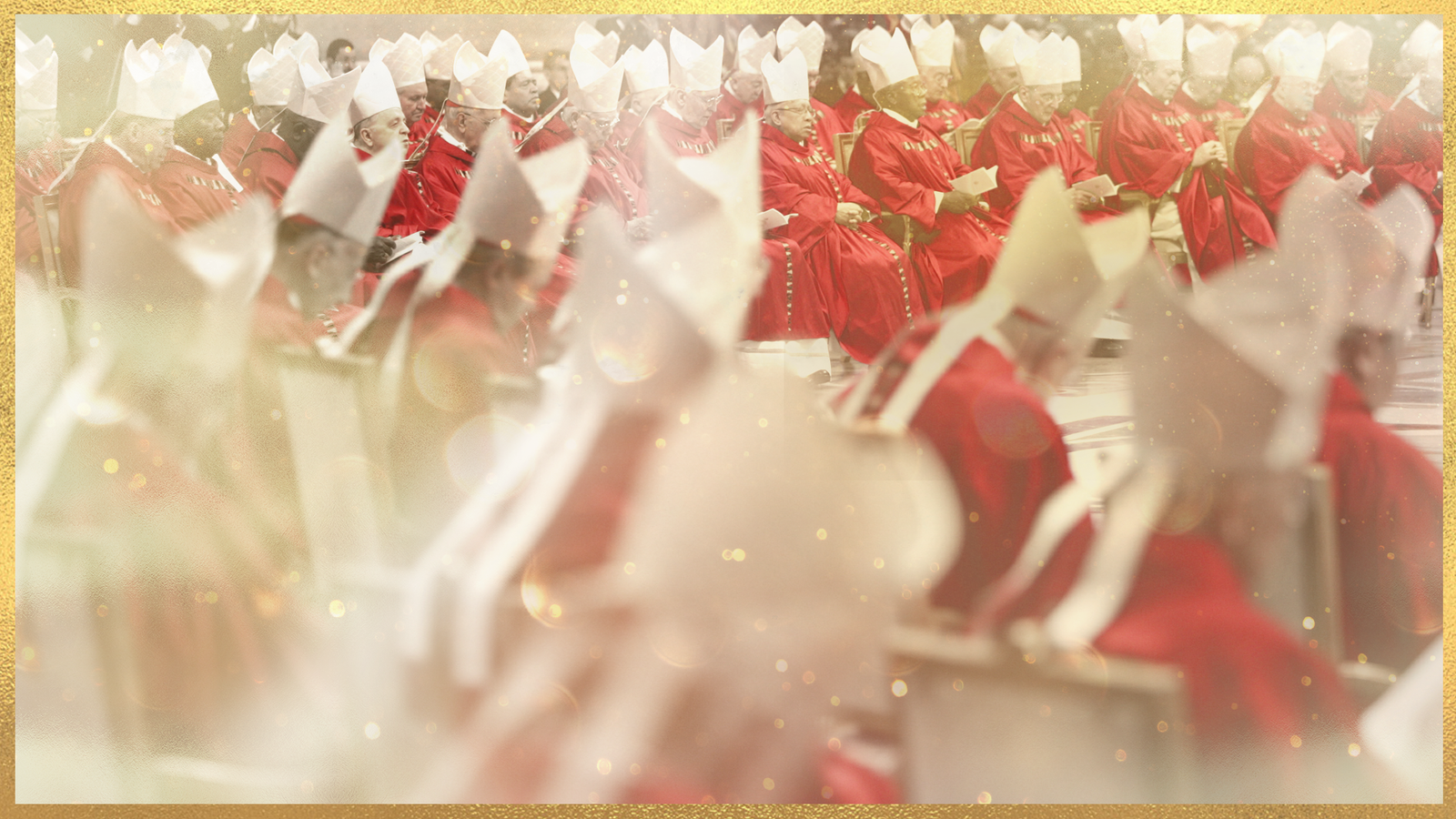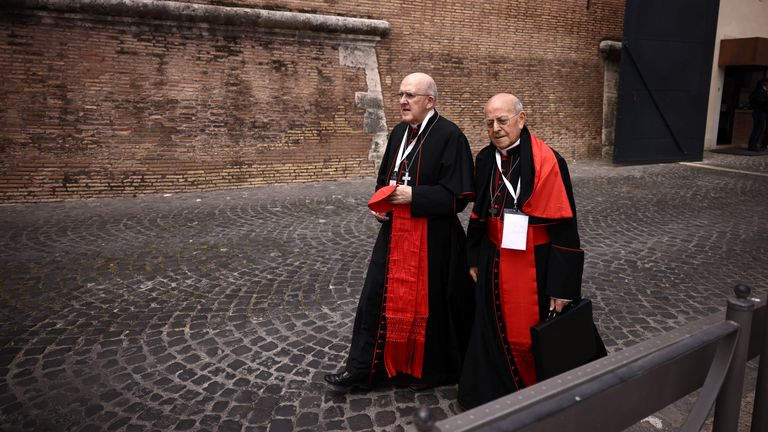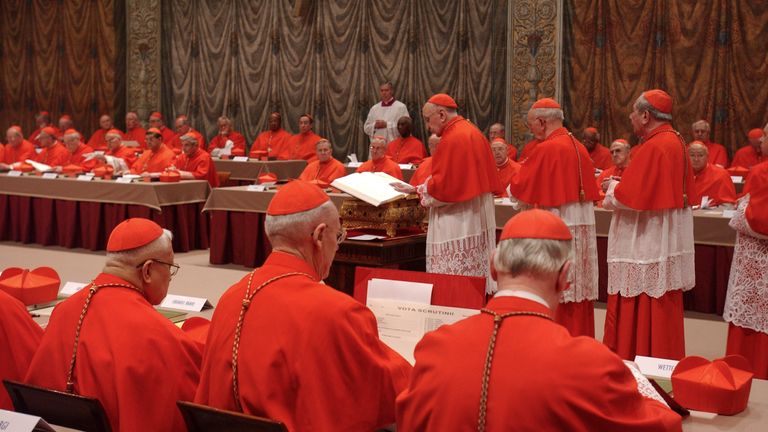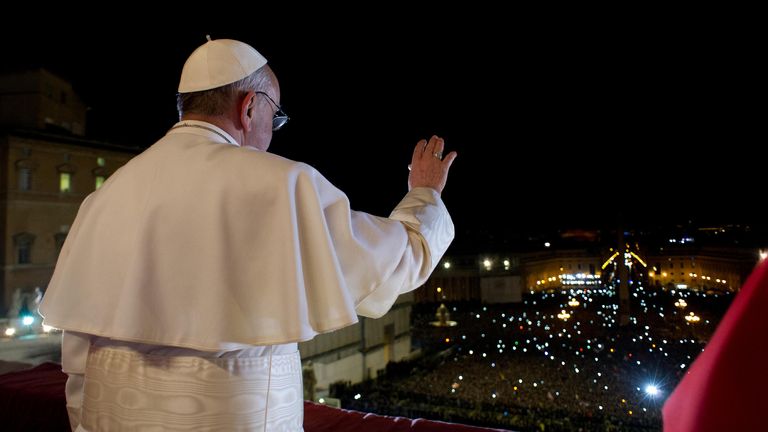When does the conclave start and how does it work?


The conclave to elect Pope Francis’s successor begins on Wednesday.
The cardinals have assembled in Rome and will soon be locked away in the Sistine Chapel, cut off from the outside world as they debate who should be the next head of the Catholic Church.
The rituals of the event are elaborate and date back centuries. So how does the process work?
Who is taking part in conclave?
Of the 252 current cardinals, there are 133 who are eligible to vote (those under the age of 80): 52 from Europe; 23 from Asia; 20 from North America; 17 from Africa; 17 from South America; and four from Oceania.
Italy has the most cardinals who can vote, with 17, while the US has 10 and Brazil has seven. The UK has three.
Ahead of the conclave they swear an oath of secrecy, vowing to never divulge what takes place behind the conclave doors. The punishment for breaking it is excommunication.
Cardinals also hand over their mobile phones before going into conclave, and don’t get them back until the end.
Cardinal Kevin Farrell – the Camerlengo, or chamberlain, who announced Francis’s death – is the interim chief of the Catholic Church and is in charge of running the meetings.
Use our slider below to look through some of the key contenders to be the next pope. For more on who the different cardinals are, read our explainer story.

The conclave begins
Once the conclave begins, the cardinals will not emerge from the Vatican until a new pope has been chosen. The word “conclave” comes from Latin, meaning “with key” – a reference to the isolation in which the cardinals are kept.
Once everyone is inside the Sistine Chapel, it will be pronounced the “Extra Omnes!” (from Latin, meaning “Everyone else out!”) and from that moment the cardinals won’t have any contact with the outside world.

For however long the conclave lasts, cardinals will meet in the Sistine Chapel and sleep in the Casa Santa Marta guesthouse inside the Vatican, either walking between the two or taking a special bus.
Anyone who tries to interfere with the conclave faces excommunication, officially being excluded from participation in the sacraments and services of the church.
There will be one vote on the first day (Wednesday) and four votes on each subsequent day – two in the morning and two in the afternoon.
![Newly installed tables for next week's conclave stand under Michaelangelo's frescoes in the Vatican's Sistine Chapel April 16, 2005. [When Roman Catholic cardinals vote in the Vatican for a new pope next week, they will swear an oath before God in Latin and then cast ballots written in the Church's official language.]](https://e3.365dm.com/25/04/768x432/skynews-sistine-chapel-michaelangelo_6899927.jpg?20250428153050)
How long can it last?
The longest conclave lasted almost three years, between 1268 and 1271.
Several have lasted only one day.
The most recent conclaves – for Pope Francis in 2013, Pope Benedict XVI in 2005 and Pope John Paul II in 1978 – all lasted less than three days.

Except for the first day, when only one ballot is held, the cardinals hold four daily votes – two in the morning, two in the afternoon – until one candidate has a majority of two-thirds plus one. In this case the required number is 89.
A variety of factors can influence who is ultimately picked for pontiff, and a number of factions within the cardinals are likely to be pushing for different candidates.
Read more:
Who could be the next pope?
What are the chances of a UK pope?
How accurate is the film Conclave?
How do we know if a decision has been reached?
Yes, this is the black smoke, white smoke part.
If the cardinals have not reached a majority, the cards and the tally sheets are placed in a stove and burned with an additive to produce black smoke, showing the outside world that a pope has not yet been chosen.
Please use Chrome browser for a more accessible video player

0:50
Vatican chimney installed ahead of conclave
For black smoke, the ballots are mixed with cartridges containing potassium perchlorate, anthracene (a component of coal tar), and sulphur. For white smoke, the burning ballots are mixed with potassium chlorate, lactose and chloroform resin.
Watching for the tell-tale smoke arising from the top of the Sistine Chapel is a tradition, with Catholics crowding into St Peter’s Square for the spectacle.
If no result has been reached after three days, the sessions are suspended for a day to allow for prayer
and discussion. More ballots are held until a two-thirds majority is reached.

When enough cardinals have agreed on a candidate, he is asked if he accepts the papacy and by which name he wishes to be known.
The ballots are burned as before, but with the recipe for white smoke to signal to the world that the Throne of St Peter will soon have a new occupant.
New pope proclaimed
The new pope then dons his new papal vestments – tailors keep large, medium and small sizes ready – and sits on a throne in the Sistine Chapel to receive the other cardinals who file up to pay homage and swear obedience to the church’s new leader.
The senior cardinal deacon then steps out on to the central balcony of St Peter’s Basilica overlooking the square and announces in Latin: “Annuntio vobis gaudium magnum. Habemus Papam” (I announce to you a great joy. We have a pope) and reveals the cardinal’s name and the name he has chosen.

The new pope then appears on the balcony to deliver his first public pontifical greeting and bless the crowds in St Peter’s Square.
A few days later, he celebrates a mass that marks the beginning of his papal ministry.